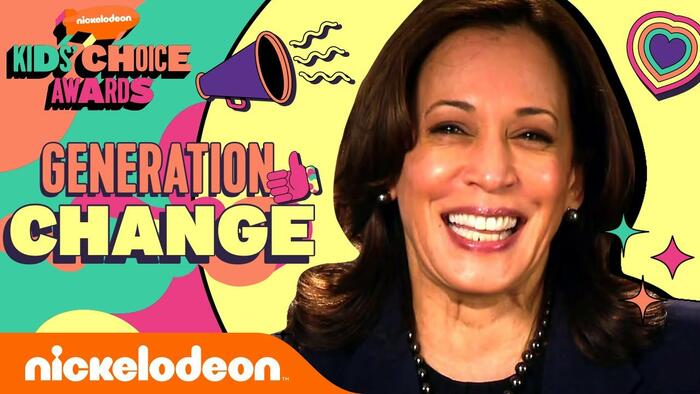In a recent informal poll conducted by Nickelodeon, children voiced their preferences for the 2024 U.S. presidential election, showing a preference for Kamala Harris over Donald Trump by a margin of 52% to 48%. This poll, which ran from October 3 to October 23 and engaged over 32,000 young participants, has sparked discussions around its implications for the upcoming election. Despite being designated as a non-scientific and entertainment-focused initiative, media outlets are interpreting the results as a positive indication for the Democratic Party. The mock election has a history of accuracy, having consistently predicted the winner of presidential elections since 1988, with a few exceptions in 2004 and 2016.
Nickelodeon’s “Kids Pick the President” is part of the network’s broader initiative, “Our World,” aimed at promoting media literacy among children and empowering them to engage with societal issues. In collaboration with The National Association of Media Literacy Educators, Nickelodeon has developed resources for parents to help children navigate media responsibly. However, criticism arises from the political slant of media literacy organizations, which are often accused of pushing left-leaning ideologies and attempting to regulate social media content. This perceived bias raises questions about the integrity and intent behind Nickelodeon’s polling and educational efforts, which critics argue could serve to advocate for a particular narrative in children’s minds.
The discussion around Nickelodeon’s poll also brings into question its validity. Skeptics highlight that children’s voting tendencies may not reflect their own political beliefs but rather mimic the views of their parents. This phenomenon suggests that the poll could merely be a reflection of the household political climate instead of an independent assessment of youth perspectives. The narrow margin of victory for Harris in this year’s poll is notable, as one might expect a wider gap if children were genuinely influenced by extensive indoctrination. This poses an interesting counterpoint to the belief that younger generations are uniformly leaning left in their political views.
Furthermore, while Nickelodeon’s poll has previously demonstrated a strong predictive capacity, the 2024 election landscape suggests alternative outcomes. Current polling data shows that Trump holds a lead in several crucial battleground states and is gaining momentum toward a potential victory in the popular vote. This shifting political environment starkly contrasts with the Nickelodeon poll results—raising skepticism about the reliability of children’s votes when predicting electoral outcomes.
The context of this informal poll is critical when considering the broader political atmosphere leading into the 2024 election. Despite Nickelodeon showcasing a Harris victory, traditional polling indicates that Trump may be on a favorable trajectory as the election calendar unfolds. The misalignment between the children’s preferences and electoral trends signals the complexities of interpreting poll data, especially an informal one like this. Additionally, previous mispredictions by similar polls, particularly in 2016, further complicate the notion of their reliability.
In summation, while Nickelodeon’s informal children’s poll may offer a whimsical perspective on electoral preferences, it remains essential to approach its findings with caution. The interplay between children’s voting behavior, parental influence, and prevailing political trends yields a rich, complex narrative that transcends a simple predictive exercise. As election day approaches, the focus will inevitably shift from these lighthearted polls to serious electoral analyses, where data-driven insights will define the political battleground rather than anecdotal outcomes from a media-centric initiative aimed at engaging youth.

